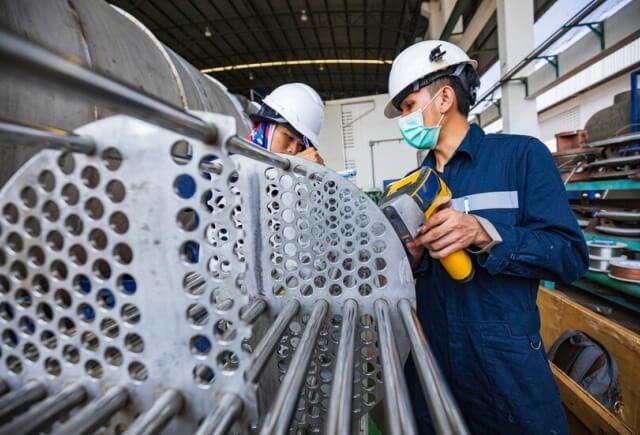In today’s world, productivity is one of the most important factors. Specifically, construction projects have been experiencing a change towards methods that are shorter in time, cheaper, and safer. One such solution is having prefabricated steel in construction. With the advancement in construction techniques, fabricated steel has proven to be one of the best and most reliable in all areas. But in detail, what makes prefabricated steel so advantageous in the construction industry? Now let us consider the reasons that make this method preferable, going into the advantages.
Why Choose Prefabricated Steel?
Steel, especially when prefabricated, is perhaps one of the most versatile materials available in the construction industry due to its strength, flexibility, and relatively low cost compared to most construction materials. It is prefabricated elsewhere in clean areas and brought to the construction site in components form, which is waiting to be assembled. It eliminates the need for worker mobilization at the construction site, increases construction efficiency, and has accurate, better-quality components. In other words, it is a construction method adapted to the contemporary requirements.
Key Benefits of Prefabricated Steel
There are many advantages to using prefabricated steel in construction projects. Let us examine the main benefits.
- Time Efficiency
First off, prefabricated steel cuts down on construction time considerably. Conventional techniques may call for weeks or even months of on-site labor. On the other hand, prefabricated steel is already made, which enables quicker on-site assembly. Consequently, projects can be finished in a fraction of the time.
- The parts come ready to install.
- Fewer delays due to bad weather or a lack of workers.
- Simplified project schedule.
Prefabricated steel is, therefore, perfect for jobs with short turnaround times. Additionally, faster construction might save money on labor and equipment rentals.
- Cost-Effectiveness
One of the main reasons for selecting prefabricated steel is cost reduction. This approach lowers labor expenses and material waste—the precision of component manufacturing results in low waste on-site. Additionally, less on-site work is required, which reduces labor costs.
- Lowers labor costs on-site.
- Reduces waste and lowers material prices.
- Lessens the need to rent large machinery.
Additionally, the shortened timetable results in lower project-related costs. Prefabricated steel so aids in cost containment without compromising quality.
- Increased Sturdiness and Power
Traditional materials are not as durable as prefabricated steel. Steel is perfect for buildings that need long-lasting structures because of its strength. Additionally, prefabricated steel strongly resists weather, pests, and fire.
- Qualities that resist fire and pests.
- Able to tolerate severe weather conditions.
- Greater durability in comparison to alternative materials.
Most significantly, steel’s durability lowers the need for repairs, decreasing maintenance expenses. Choosing steel is, in essence, an investment in durability.
- Flexibility in Design
The versatility of prefabricated steel is one of its most notable advantages. The ability to mold steel into a variety of shapes enables creative design. Builders and architects can design unique layouts that enhance a building’s visual appeal and usability.
- Permits intricate, imaginative patterns.
- Customizable for special projects.
- Fits along with current architectural styles.
Prefabricated steel eliminates the need to compromise utility for innovation. Steel is capable of supporting both creative ideas and structural requirements.
- Environmentally Friendly
Building sustainability is becoming increasingly important, and prefabricated steel satisfies this need. Because steel is recyclable, it can be used again for other projects. It is also a more ecological choice because the controlled manufacturing environment reduces waste.
- Steel is completely recyclable.
- Minimizes waste in contrast to conventional techniques.
- The environmentally responsible decision for green initiatives.
Prefabricated steel thereby supports environmentally friendly construction methods, assisting businesses in lessening their environmental effect.
Practical Applications of Prefabricated Steel
Prefabricated steel is flexible and multipurpose. Construction projects of all sizes, from massive industrial complexes to residential buildings, can employ it. Here are a few instances:
- Residential Housing: Offers housing solutions that are prompt and effective.
- Commercial buildings: Perfect for warehouses, offices, and shopping centers.
- Industrial Facilities: Excellent for industrial plants and manufacturers.
- Infrastructure and bridges: Provide strength for major undertakings.
Steel’s strength, versatility, and efficiency are advantageous for each use. Prefabricated steel is, therefore, a wise option for various building requirements.
Challenges and Solutions
Prefabricated steel offers many advantages, but there are challenges as well. Large steel parts can be expensive to transport, and assembly frequently calls for specific knowledge. Nevertheless, there are ways to deal with these problems:
Transportation: Route optimization and careful planning lower expenses.
Assembly Skills: Hiring specialized crews or training local workers can help fill these skills.
In other words, the difficulties associated with prefabricated steel can be overcome with careful planning. To guarantee seamless operations, builders can take preventive measures.
Final Thoughts: Is Prefabricated Steel Right for You?
To sum up, prefabricated steel has many advantages, making it an excellent option for contemporary building projects. It is difficult to overlook its benefits, which include sustainability, durability, cost-effectiveness, and time savings. Its adaptability also enables a variety of uses, ranging from residential buildings to commercial establishments.
Prefabricated steel could offer the ideal strength, efficiency, and design flexibility ratio when considering a building project. In summary, it is a strong option for anybody looking for an affordable, environmentally friendly construction technique. Prefabricated steel can be the best option if these characteristics fit the requirements of your project.


